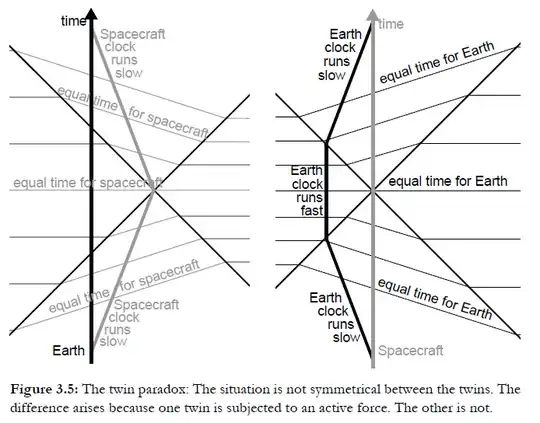On Wikipedia, it is stated that:
Proper time along a timelike world line is defined as the time as measured by a clock following that line.
and also
The proper time interval between two events depends not only on the events but also the world line connecting them, and hence on the motion of the clock between the events.
Unfortunately, both of these statements make sense to me, but how they can both be correct does not. If the proper time interval between two events is the time as measured by a clock following that line, then surely that measurement is independent of path? If I watch someone travel (through space) slowly, but directly between two events and measure a proper time $\tau_1$, and someone else travels quickly, but indirectly and measures a proper time $\tau_2$, how can these measurements be different?
From both of their perspectives, the events happened at the same point, separated by a time interval $\tau$, neither of them is aware they have moved at all, but as an outside observer I have seen that their wordlines have different lengths.
